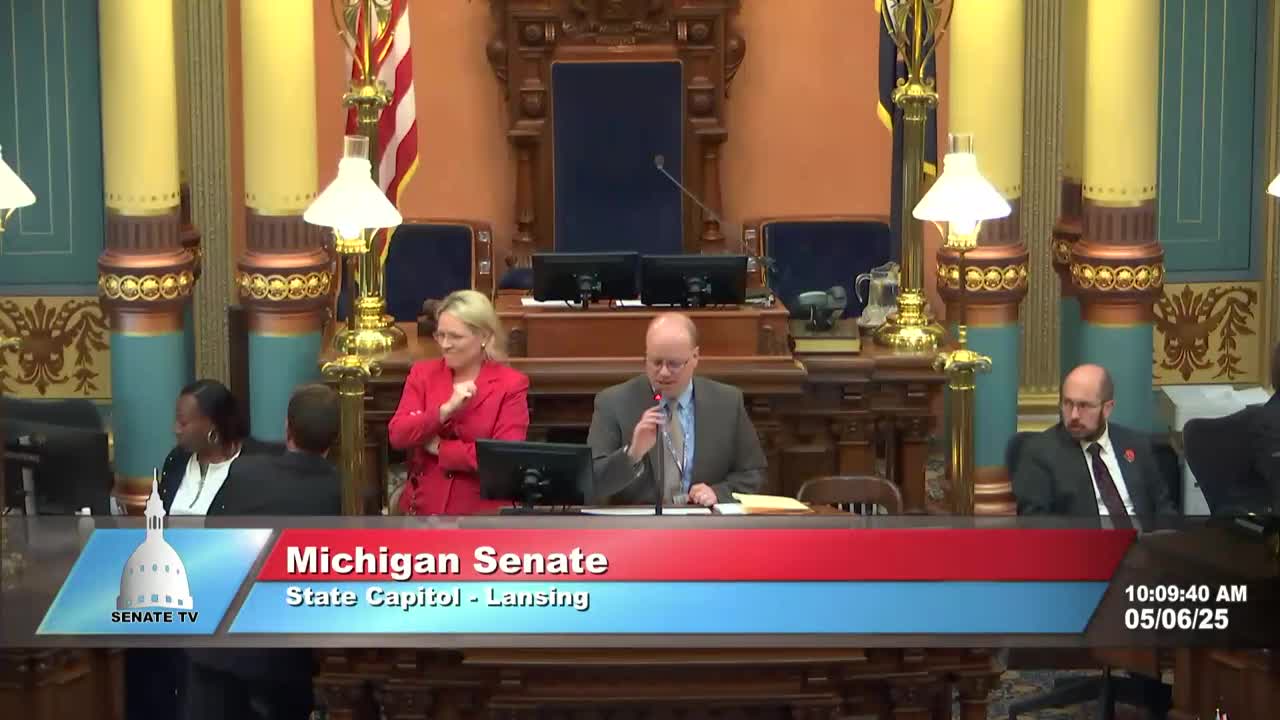Senator Huizenga welcomes Grand Rapids students to Michigan Senate session
May 06, 2025 | 2025 Senate Legislature MI, Michigan
This article was created by AI summarizing key points discussed. AI makes mistakes, so for full details and context, please refer to the video of the full meeting. Please report any errors so we can fix them. Report an error »

In a recent session of the Michigan State Senate, several special introductions highlighted the importance of community engagement and advocacy. The meeting, held on May 6, 2025, featured notable visits from local students and advocacy groups, emphasizing the Senate's commitment to fostering connections with constituents.
Senator Huizenga opened the session by welcoming 25 students and 20 adults from Saint Anthony's of Padua School in Grand Rapids. This visit underscores the Senate's role in educating young citizens about the legislative process and encouraging civic involvement. The presence of these students serves as a reminder of the importance of youth engagement in shaping future policies.
Following this introduction, Senator Singh recognized 30 members of the American Heart Association, who were present for their advocacy day. This group is actively involved in promoting health initiatives, including student safety in schools and tobacco cessation efforts. Their visit highlights ongoing discussions within the Senate regarding public health policies and the importance of community advocacy in influencing legislative priorities.
The session also included calls for caucuses from both Senate Democrats and Republicans, indicating ongoing discussions among party members about various legislative matters. These caucus calls reflect the Senate's procedural operations, ensuring that members are aligned on key issues and strategies moving forward.
Additionally, Senator Kavanaugh welcomed 27 students and 18 adults from Livonia's Hoover Elementary School, further emphasizing the Senate's outreach to local communities and the importance of involving young people in governmental processes.
Overall, the session showcased the Michigan Senate's dedication to engaging with constituents and addressing critical health and educational issues. As the Senate continues its work, the involvement of advocacy groups and students will likely play a significant role in shaping future legislation. The next steps will involve discussions on the issues raised during these introductions and how they can be integrated into broader legislative agendas.
Senator Huizenga opened the session by welcoming 25 students and 20 adults from Saint Anthony's of Padua School in Grand Rapids. This visit underscores the Senate's role in educating young citizens about the legislative process and encouraging civic involvement. The presence of these students serves as a reminder of the importance of youth engagement in shaping future policies.
Following this introduction, Senator Singh recognized 30 members of the American Heart Association, who were present for their advocacy day. This group is actively involved in promoting health initiatives, including student safety in schools and tobacco cessation efforts. Their visit highlights ongoing discussions within the Senate regarding public health policies and the importance of community advocacy in influencing legislative priorities.
The session also included calls for caucuses from both Senate Democrats and Republicans, indicating ongoing discussions among party members about various legislative matters. These caucus calls reflect the Senate's procedural operations, ensuring that members are aligned on key issues and strategies moving forward.
Additionally, Senator Kavanaugh welcomed 27 students and 18 adults from Livonia's Hoover Elementary School, further emphasizing the Senate's outreach to local communities and the importance of involving young people in governmental processes.
Overall, the session showcased the Michigan Senate's dedication to engaging with constituents and addressing critical health and educational issues. As the Senate continues its work, the involvement of advocacy groups and students will likely play a significant role in shaping future legislation. The next steps will involve discussions on the issues raised during these introductions and how they can be integrated into broader legislative agendas.
View full meeting
This article is based on a recent meeting—watch the full video and explore the complete transcript for deeper insights into the discussion.
View full meeting
